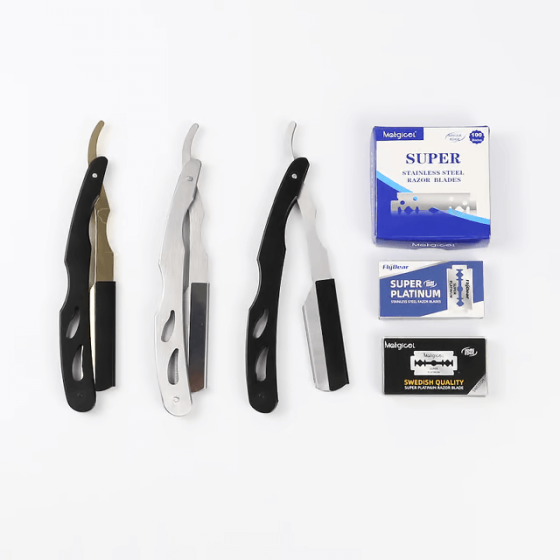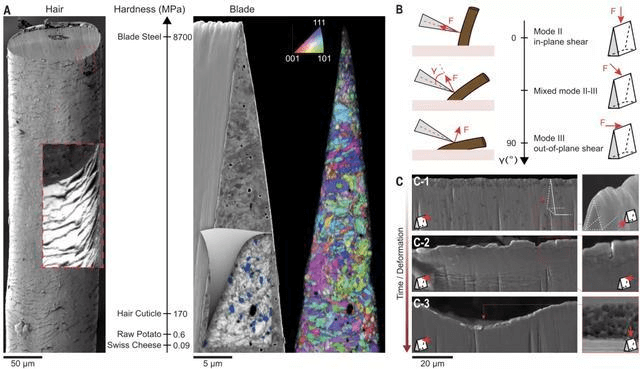Table of Contents
- Introduction
- Traditional Beliefs About Blade Wear
- Investigating Blade Damage: A New Approach
- How Blades Break: Key Discoveries
- Designing Tougher Blades: What’s Next?
- Future Solutions: Designing Durable Alternatives
- Conclusion
- FAQ
1. Introduction
Why does a razor blade, forged from tough steel, lose its edge so quickly when it’s only cutting soft human hair? It’s a question that baffles anyone who’s had to replace a blade after just a few shaves. Hair is about 50 times softer than the steel in a razor, yet this mismatch doesn’t spare the blade from rapid dulling. Scientists have long wrestled with this oddity, and a recent study from MIT offers a compelling explanation that challenges old ideas and points to a sharper future.

2. Traditional Beliefs About Blade Wear
For a long time, people assumed that razor blades dulled through a slow grinding process. Each swipe across hair and skin was thought to wear down the blade’s edge bit by bit, like sandpaper smoothing wood. It seemed logical—friction should gradually blunt the steel. But this theory didn’t quite add up. If hair is so much softer than steel, why don’t blades last longer? The speed of the dulling suggested something more was at work than simple erosion.
3. Investigating Blade Damage: A New Approach
To crack this puzzle, MIT engineers zoomed in on the shaving process with cutting-edge tools. They used a scanning electron microscope (SEM) to inspect razor blades after each use, revealing details invisible to the naked eye. They also built a small device to mimic shaving in a controlled way, clipping a blade and a hair in place to watch how they interact under the SEM. This setup let them capture clear images and videos of the blade slicing through hair, exposing what really happens at the edge.
4. How Blades Break: Key Discoveries
The results turned old assumptions upside down. Instead of a smooth wearing away, the blade’s edge showed tiny cracks and chunks breaking off—damage that wasn’t uniform but clustered in certain spots. Why? The answer lies in the steel’s microscopic makeup. Though steel is hard, it’s not perfectly even; it has patches of varying toughness. When hair presses against these uneven zones, it creates intense pressure at the borders between hard and soft areas, sparking cracks.

The angle of attack matters too. A straight-on cut spreads the force evenly, keeping damage low. But if the blade tilts or the hair bends, the pressure piles up on weak points, making fractures more likely. Once a crack starts, the steel’s uneven structure lets it spread fast, chipping away more of the edge and leaving the blade dull.
5. Designing Tougher Blades: What’s Next?
These findings light the way to better blades. If steel could be made more uniform at the microscopic level, those pressure points might vanish, cutting down on cracks. The MIT team is already testing ways to shape steel into stronger, sharper forms under high pressure, and they’ve filed a patent for their ideas. This isn’t just about razors—think kitchen knives or industrial cutters. Even small changes, like slicing straight instead of at an angle, could keep edges keen longer when tackling soft materials.
6.Future Solutions: Designing Durable Alternatives
Armed with this new understanding, scientists are now exploring ways to extend the life of razor blades. Their current efforts focus on reshaping steel under high pressure to craft sharper, more resilient edges. These innovative designs aim to minimize the vulnerabilities exposed by the study. Researchers are optimistic and plan to test the durability of these prototypes soon, potentially revolutionizing the shaving experience with longer-lasting tools.
7. Conclusion
This research unravels a mystery we’ve all felt but few understood: why a sturdy razor blade falters against flimsy hair. It’s not about gradual wear but sudden breaks, driven by the steel’s hidden flaws and the way it meets its target. With this knowledge, we’re on the brink of tougher, longer-lasting blades—tools that might finally outlast our morning routines.
FAQ
Should I shave with more pressure or use a lighter touch?
When shaving, use gentle motions and avoid pressing too hard to prevent the razor from dragging uncomfortably against your skin. Instead of trying to remove all hair and skin in one pass, shave lightly and then go over the area again for a smoother result.
How can I prevent my razor from dulling?
After each use, soak the razor blade in rubbing alcohol. This removes moisture and reduces rust, helping to extend the blade’s lifespan. Dullness often occurs due to microscopic rust on the blade’s edge.
What does it mean when a razor blade is dull?
A dull razor will tug at hairs instead of cutting them cleanly, leading to an uncomfortable pulling sensation.
Do straight razors get dull?
Yes, even high-end straight razors will gradually dull with regular use (e.g., weekly shaving). Sharpening tools like honing stones can restore the edge, but they’re not meant for daily or weekly use. Hanging strops and paddle strops, however, can help maintain the blade.
Can a dull razor cause razor burn?
Yes, using a dull blade, dry shaving, or shaving too quickly can lead to razor burn. Razor burn typically appears within minutes after shaving and may last hours or even days. It’s different from razor bumps (pseudofolliculitis barbae).
Is there a razor blade that never gets dull?
The Never-Dull Blade Set includes an XIRUI razor, shaving cream, and lifetime blades, offering a complete shaving experience. The starter kit also comes with a razor handle and a 100-pack of blades, so you’ll never have to worry about dull blades again.
How can I fix a dull blade?
There are two ways to restore a dull blade:
- Full Sharpening – Resharpen the entire blade to restore its edge.
- Partial Sharpening – Gradually hone the dull section, then refine the surrounding edge. Use a whetstone to grind the dull part until sharp, then polish the rest with a higher-grit stone.
How do I know if my blade is dull?
After thoroughly cleaning the blade, check for signs like jagged edges, bent teeth, or an overall worn appearance. If these are present, the blade is dull.
How long does one razor blade last?
A safety razor blade used almost daily typically lasts about a week or six shaves—assuming the “three-pass shaving” technique is used. Over time, the blade will gradually lose its sharpness.


